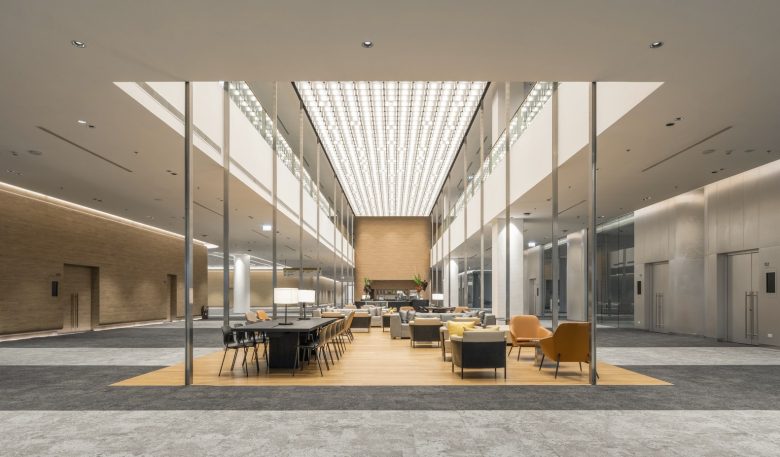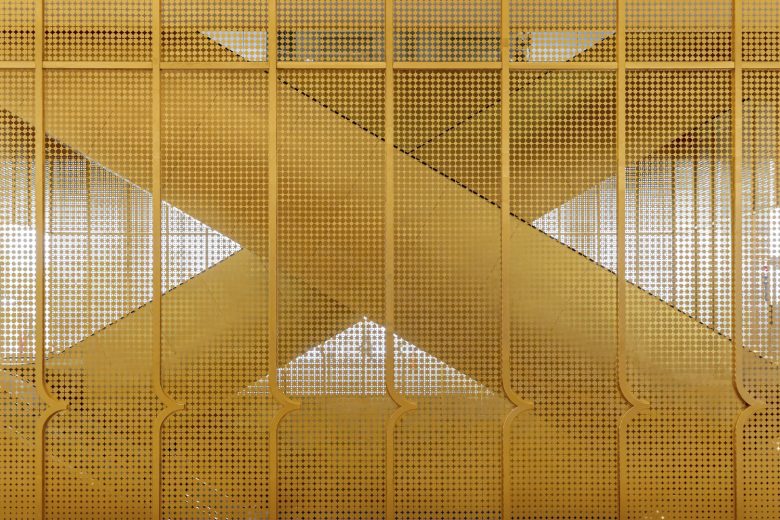

Queen Sirikit National Convention Centre (QSNCC) is Thailand’s first national convention center. Constructed in 1991 under the name of Queen Sirikit, the Queen Mother of Thailand, the project was to host the 46th Annual Meetings of the Boards of Governors of the World Bank Group and to serve local and international visitors in the prime area of Bangkok, Ratchadaphisek Road, Khlong Toei District. QSNCC closed its doors for a major expansion in 2019 and reopened in September 2022. During the three years of construction, we worked closely with the engineers, the construction teams, and a number of designers, including architects, lighting specialists, and landscape designers. The main objectives are to offer a new approach to Thai design reflecting the latest building technologies, to preserve precious art objects by master artists of Thailand, and to showcase specific Thai craftsmanship to the international audience.
To preserve art objects from the former QSNCC, we have relocated the existing gilded wooden doors with their metal handles, which are in the form of the mythical creature, naga, as the focal point of the main conventional hall entrance. Another existing art piece, a column of the four-headed elephant holding a globe, was reconstructed and relocated next to Plenary Hall. The main inspiration for our interior design of QSNCC is drawn from the collection of Queen Sirikit’s outfits. Queen Sirikit was the pioneer of introducing Thai arts and crafts to an international level. She was interested in preserving the knowledge of Thai craftsmen and, at the same time, modernizing these traditional weaving techniques. In doing so, she was helping to create work for the local communities. To pay tribute to Queen Sirikit and her influence in keeping tradition current with modern society, the design of the QSNCC is inspired by her outfits. This is then considered by the various functions of the QSNCC and can be expressed through the design of each floor level.
The main entrance to QSNCC is on the ground floor; this level directly connects the visitors to the primary drop-off on Ratchadaphisek Road and the secondary drop-off adjacent to Benjakitti Park. An important feature is the horizontal joints of the travertine stone cladding of the Exhibition Halls spanning 300 meters in length. The joints of each panel are either curved or angled, reflecting the basic geometries of Thai patterns as seen in Queen Sirikit’s Chitlada dress, a modern Thai outfit. At the entry points of the exhibition halls, we added a feature of curved copper laminated panels to break the monotony of the travertine stone. Gold trims are detailed on the ceilings, creating a rhythm inspired by the golden thread in her Chitlada dress.
The lower ground level connects to the underground train station (MRT) entry to QSNCC and the parking spaces in Basements 1 and 2. Other facilities on this level include cafes and restaurants. The featured architectural element of this floor is the dominant staircase that links the visitors to the ground level, which is at the street level. This staircase was designed to function as a waiting area, visitor meeting point, and emergency exit. We have chosen Queen Sirikit’s casual Thai black and white loincloth patterned coat as the visual inspiration. This is expressed through the floor pattern with a distinctive Thai character. The black and white loincloth is a Thai vernacular style. Queen Sirikit modernized this style in fashion by commissioning European designers such as Pierre Balmain. In the reception area, laminate panels manufactured with the latest bending and cladding technology cover the entire exterior wall space of the exhibition halls. This feature is inspired by the modern pleated fabric of Queen Sirikit’s outfits, which at the same time evoke a sense of Thai vernacular style.
The first and the second floors of QSNCC accommodate 50 conference rooms designed for business meetings and 2 multi-purpose halls, the Ballroom Hall and Plenary Hall. We have chosen to study one of the basic Thai patterns – prajamyam which is seen on Queen Sirikit’s Chakri dress (formal outfit). This pattern has been redrawn over and over again until the re-designed prajamyam can be applied to different architectural scales for a variety of spatial effects – on the ceilings, walls, and partitions. This pattern is also printed on the carpets. The Ballroom Hall’s interior design is inspired by Queen Sirikit’s outfits of the Hill Tribe pattern, which she would wear with her silver jewelry. These are both produced in the north of Thailand. The traditional Hill Tribe designs are composed of geometrical patterns abstracted from nature. After studying the pattern, we reinvented it and applied it to the carpet and the interior walls. We also made these patterns functional to serve as acoustic boards inside the exhibition halls. An ornate feature is the application of silver leaves that flow from the curvature of the ceilings to the walls.
Vertical circulation enclosures – The prajayam pattern appears again on the partitions of the escalator enclosures, this time with the golden leaf combination. This golden leaf motif is seen in Thai Buddhist temples as a symbol of sacredness, integrity, and respect. We decided to use silver leaves to ornate the elevator shafts for the elevators to mark the distinction between the two different vertical transitions.
Architects: onion
Lead Architect: Arisara Chaktranon
Photographs: Ketsiree Wongwan





























Add to collection










